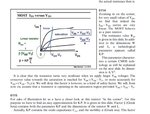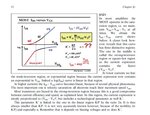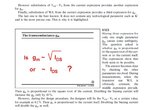d123
Advanced Member level 5

Hi,
I thought you could calculate transition time by "t is the switching transient time (ton or toff)" (Zetex, DN80 "Bipolar transistors for MOSFET gate driving applications") - I'd understood you choose one or the other, I can't locate the second pdf where it also says the same/similar, along the lines of rise time + t on OR t off.
Probably "beginner WRONG assumption", but I'd assumed that if fSW is 0.00001s, then ton + toff would need to be below/within that 10uS, and the MOSFET would need to be turned on as "hard" as possible to avoid slowness and therefore also reduce switching losses, theory sounds so easy, practice probably not so.
Again, can't remember the web/document but it said, for what that may or may not be worth that gate current is - my apologies for such vagueness - (sic) "jaw-droppingly considerable in quantity" ...calculations I did shocked me, I must admit. Let's hope some-one who does this properly can answer more adequately.
I thought you could calculate transition time by "t is the switching transient time (ton or toff)" (Zetex, DN80 "Bipolar transistors for MOSFET gate driving applications") - I'd understood you choose one or the other, I can't locate the second pdf where it also says the same/similar, along the lines of rise time + t on OR t off.
Probably "beginner WRONG assumption", but I'd assumed that if fSW is 0.00001s, then ton + toff would need to be below/within that 10uS, and the MOSFET would need to be turned on as "hard" as possible to avoid slowness and therefore also reduce switching losses, theory sounds so easy, practice probably not so.
Again, can't remember the web/document but it said, for what that may or may not be worth that gate current is - my apologies for such vagueness - (sic) "jaw-droppingly considerable in quantity" ...calculations I did shocked me, I must admit. Let's hope some-one who does this properly can answer more adequately.










